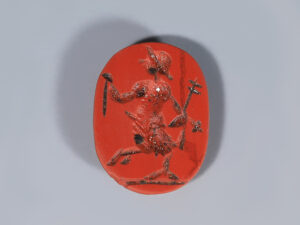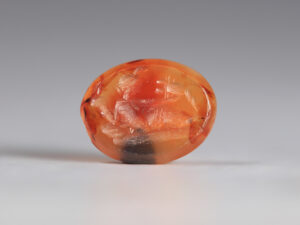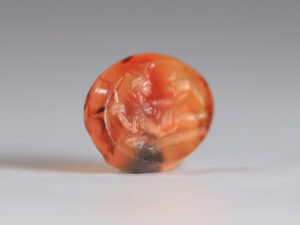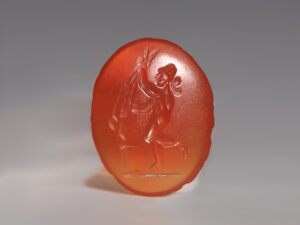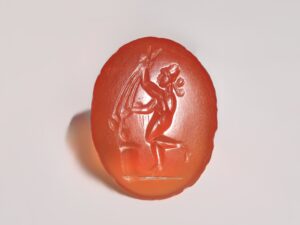The term intaglio refers to a small image that has been engraved into a gemstone and usually set in a piece of jewellery, most commonly a ring. Such artistic form has its origin in Sumer in the 4th millennium BC, with the appearance of cylinder and stamp seals, whereby decorations and patterns were engraved into soft stones. Intaglios with fine detailing were highly desired with one reason being that the intricacy making wax seals difficult to forge. The earliest intaglios were produced by hand using simple iron tools along with abrasive emery powders. Common scenes used during the Roman period were animals, mythological creatures and portraits. During the Hellenistic period and the early Roman Empire, the art of intaglio reached its apogee, with there being a steady decline in craftsmanship in the late Imperial Rome, until a revival of interest with the Byzantine and during the Renaissance.
To find out more about intaglios please visit our relevant blog post: Engraved Gemstones in Ancient Rome




